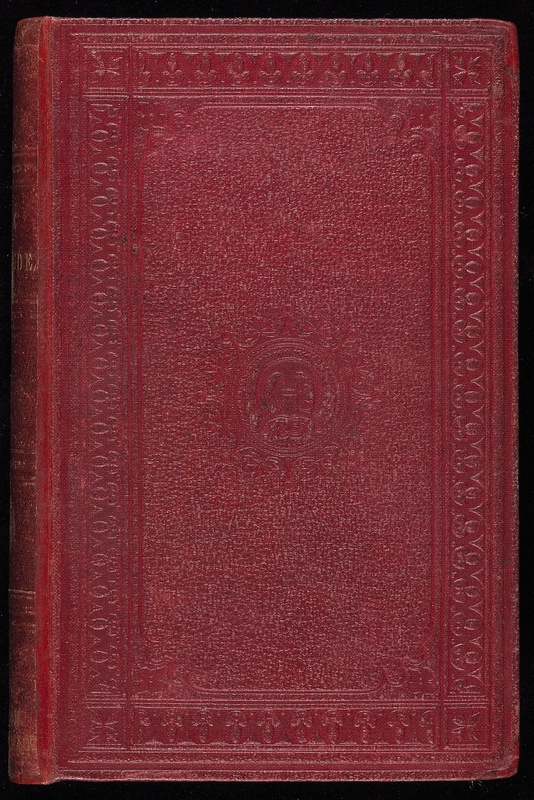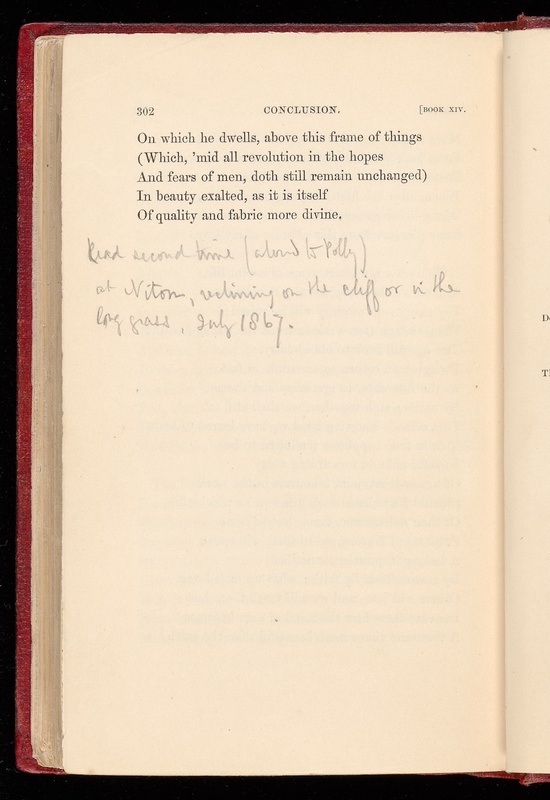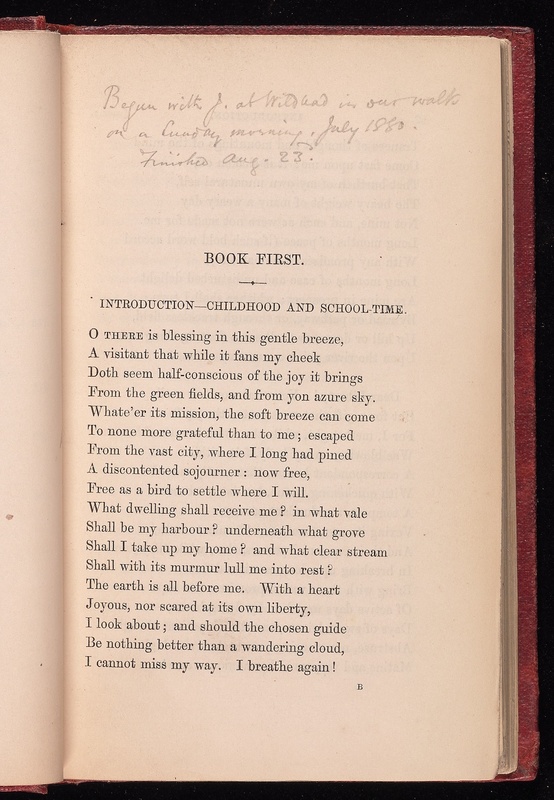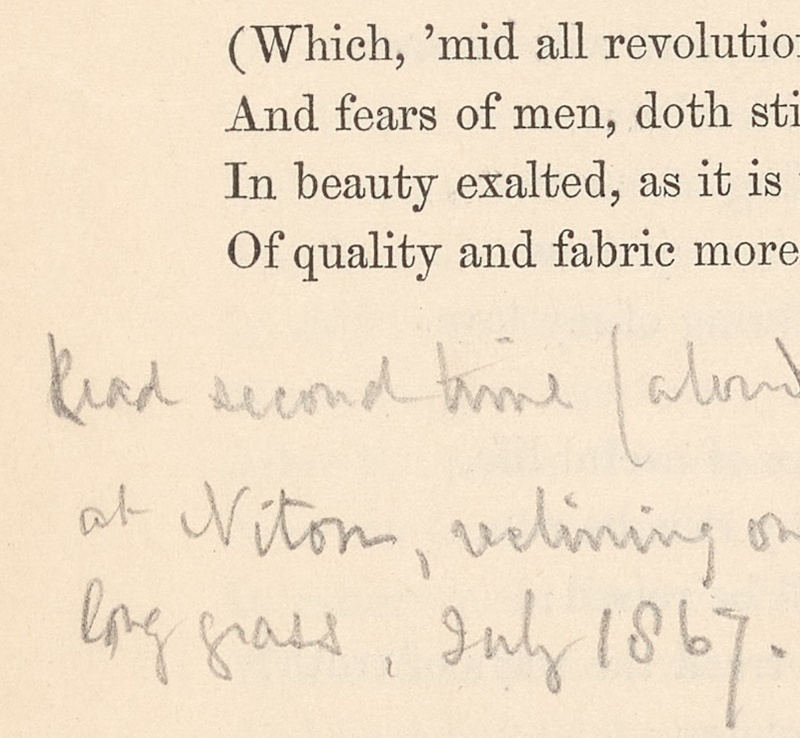George Eliot’s copy of Wordsworth’s “The Prelude”
Item
-
Title
-
George Eliot’s copy of Wordsworth’s “The Prelude”
-
Description
-
The cover of George Eliot’s copy of Wordsworth’s “The Prelude” is a rich, brick-red colour, imprinted around the edge with an intricate border of repeating geometric shapes that surrounds an embossed stamp, perhaps that of the volume’s printer. Within the intricate border, the binding has a grainy appearance, while the rest of the surface appears smoother. The cover is slightly warped, and the edges look somewhat discoloured and bent, suggesting that the volume was well used.
Page 302 of the book features a header that identifies this page as a part of the “Conclusion” to “Book XIV” of “The Prelude.” Below this header are the last five printed lines of a poem and some handwritten text sketched in graphite pencil that reads:
Read second time (aloud to Polly)
at Niton, reclining on the cliff or in the
long grass, July 1867.
An earlier page from the volume includes more text at the top of the page, written in graphite pencil in a different hand. It reads:
Begun with J. at Wildbad in our walk
on a Sunday morning. July 1880.
Finished Aug. 23.
Below these handwritten lines are two lines of a poem with the title “Book First” and underneath, “Introduction – Childhood and School-time.”
The book is currently housed in the Beinecke Library at Yale University.
-
DEBORAH LUTZ ON WHAT THIS OBJECT TEACHES US:
These pages from George Eliot’s copy of “The Prelude” provide a window onto nineteenth-century reading practices and insight into George Eliot’s relationships and reading philosophies.
These preserved pieces of handwritten text capture a common nineteenth-century reading habit: the recording of when and where a text was read in order to pick out and preserve a moment in time (called “date marking” by Andrew Stauffer). As Dr. Lutz explains, Mary Russell Mitford recorded her own participation in this practice in “Recollections of a Literary Life.” This object, then, not only reveals intimate details about Eliot’s life but also exemplifies the importance of reading to those living in the nineteenth century.
The book’s pages included here record the relationships that George Eliot (pen name of Mary Ann Evans) had with two men, George Henry Lewes and John Cross. One of the handwritten inscriptions was written by Lewes in 1867 when the couple went to Niton on the Isle of Wight to restore their failing health. (“Polly” was a nickname for Eliot.) As Dr. Lutz notes, Eliot was writing “The Spanish Gypsy” at the time, a poem that was clearly influenced by Wordsworth. In addition, Dr. Lutz explains how the specificity of Lewes naming the grass and the cliff anchors the poem to this particular location as if the reading surrounds and holds onto that spot in time and geography, letting them possess it as a performative experience. Dr. Lutz surmises that the volume must have acted as a kind of aural relic for Eliot, allowing her to hear Lewes’s voice reading to her when she re-read the poem after his death. In a similar way, in the other inscription, Eliot records reading the poem with “J.” (that is, John Cross) in Germany during their honeymoon in 1880. The annotation appears at the beginning of the poem rather than on the same page Lewes annotated, suggesting to Dr. Lutz that Eliot wished these two experiences, fourteen years apart, to appear separately.
Dr. Lutz suggests that these two annotations show Eliot embedding the poem into her living hours and years, marking it and being marked by it, an idea that suggests Eliot’s wider philosophies about reading. Dr. Lutz makes a connection between Eliot’s understanding of reading and the philosophies of reading expressed by her characters, specifically Maggie Tulliver in “The Mill on the Floss.” Maggie describes books as relics that tell feelingly of the past, a sentiment that, according to Dr. Lutz, accords with Eliot’s feelings on the subject. This particular volume, with its handwritten references to place and time, thus functions as a “haptic text”—a text not just for reading but for bringing awareness to the text’s place in the world through its record of its owners’ lives.







